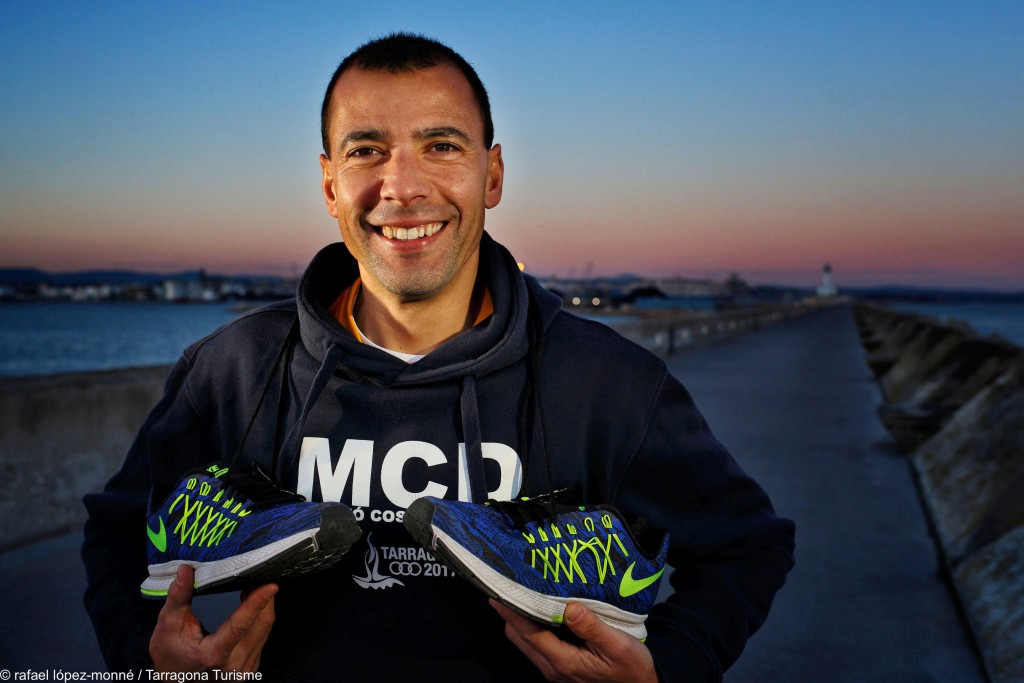
Juanan Fernández travels over 3,000 miles a year on foot, which is, more or less, a return trip to Oslo. Passionate, tireless for running, Catalonia half marathon champion for some years, Juanan moves fast and always ahead. During the daybreak of recession, he quit a key position in a certificate sector multinational company and made running become his personal vital and business project. Today, Running Solutions, the firm behind some local sport events, is in the top 10 of its kind. His project became larger and larger just as urban athletics gathered more users. In the last 10 years, the number of enthusiasts doubled and it’s now over 4 million in Spain.
Running makes it now to everyone and generates, just in Spain, over €3,000 Million a year. It’s been some years now that Juanan, a restless talent, has been analysing the various indicators in the business. Competitions gather thousands of people and the impact of an event such as the Marató de Tarragona, organised by Running Solutions, is no slouch. There’s no other competition that is more successful in January, and it draws over 2,000 people, counting those taking part plus their companions. Two hotels in the city get absolutely packed during the event, which generates over €350,000. Visitors –mainly Spanish, in the case of Tarragona– are youngsters and middle-age users that travel with their families and do much more that just running when visiting the city.
Other than direct profit though –all the business activity that takes part in a January weekend–, it’s the global effect over the city’s trademark that Juanan gives more importance to. Once the last edition of the Marató de Tarragona was finished, users could enter their numbers on a website and find themselves in a number of professional photographs. Over 1,700 people downloaded their pictures and shared them on their social networks, which then produced over 90,000 reactions among their contacts. The 20% of the 2,000 non-local participants spent more that 1 night in the city.
“Running is a number of experiences shared by a lot of people, and for many, occasional visitors, this is an access door to Tarragona”, explains Fernández. Their memories and experiences are the raw material of the new tourism. “If we could manage to build a new experience combined with activities other that the actual race, we would get so much more profit. Tarragona is not Barcelona nor Madrid; but it has a climate, food and patrimony that are pretty much unknown for many people, despite having a great potential to get to top level”, he says. The average age of the Spanish runner is 30, way over that in other disciplines. This fact is usually related to higher purchase power.
The Mecca for local runners is the 10,5-mile return way between Arrabassada beach and the Lighthouse, with stunning seaside views and no junctions. The profile is not even, which is something other routes with a higher international potential have, such as Valencia or Seville, and that is more likeable to record-breaking enthusiasts. However, according to Fernández, the visibility the 2017 Mediterranean Games will provide could add to the city’s global positioning in the running map. Among all the Spanish cities, it is Valencia that is pushing harder on generating businesses as part of this phenomenon. With the help of the Local Government, the Fundació Trinidad Alfonso –led by Juan Roig, Mercadona manager–, they’ve invested €2 million to turn the capital city of Túria into an international reference in the sector.
Text: Oriol Margalef (@OhMargalef on Twitter)
Pictures: Rafael López-Monné (@lopezmonne on Twitter)
Translation: Artur Santos (@artur_1983 on Twitter)



